Applications

Paint & Coating
Calcium carbonate powder makes and essential improvement on characteristics of the paint and increases the coverage of surface area by the paint.
We manufacture a wide range of different particle size calcium carbonate that can be used for making a different quality of paint. We have also customized our calcium carbonate for some of our strategic partners to ensure the constant quality for their production line.

Paper & Printing
Calcium carbonate is normally used in paper industry as filler or coating pigment. At present, the Calcium Carbonate is most common in comparison with other papermaking filler materials. The demand for brighter and bulkier paper makes calcium carbonate more interesting than other options.
Selecting the right type of calcium carbonate additive for each kind of paper is the key element to save more costs.
Main profits gained in consequence of using calcium carbonate in paper industry is to create the high level of whiteness, reduce the wood content and environmental footprint, reduce the finished cost and still ensure paper durability.

Construction
Calcium carbonate is widely used in construction industry. When added to concrete, calcium carbonate promotes self-compacting characteristics. It creates better workability, high strength and improve the appearance of concrete with a smoother surface.
When it’s used in plaster making, it plays a key role as the final finishing coat on the mortar surface before painting. It helps to create a waterproof and smooth surface.Calcium carbonate can also be used in making pavers, ceramics, renders, grouts and cement.

Plastic Industry
Calcium carbonate is one of the most commonly used as mineral filler in plastic industry. It’s normally used as plastic compound additive in order to produce opacity and gloss which will improve the surface quality of finished product.
It’s also used in production of flexible and stiff PVC compounds such as wire and cable insulation, latex gloves, extruded pipes and tubes, etc.
When calcium carbonate is used in polypropylene compounds, it will increase the rigidity which is essential for high temperature applications.
Over the recent years, calcium carbonate is also commonly used in rigid packaging as it can improve the quality of packing and save more costs at the same time. It as a plastics additive is approved by FDA, for versatile applications food and medical packaging.

Agriculture
Calcium Carbonate is known as an organic natural fertilizer that reduces the soil acidity degree. It is an essential amendment of plant nutrition which ensure the sustainability of soils after the use of pesticides or heavy rainfalls.
Percentage of purity, consistency and brightness, play the most important roles in the end use and application.
It’s also used to help prevention from spread of various kind of diseases, such as black spot, powdery mildew and blossom. Other advantages of using calcium include in agriculture are protection from heat stress, increment in metabolic functions in plant cells and conducting to a better intake of other nutrients like nitrogen and phosphorus.

Animal Feed
Calcium carbonate is also used for animal nutrition. Calcium based additives for cattle and other livestock play an important role in bone strength and growth as well as in general health of animal.
It can increase their resistance to disease, make them easier to digest the food and increase the quality and quantity of their milk.
High-purity limestone together with low grade of acid-insoluble compounds, can be an essential feed for domestic livestock such as sheep, cattle and camels.
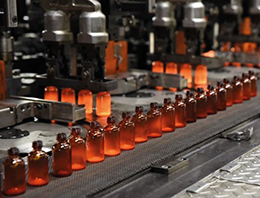
Other
Other applications of calcium carbonate include but not limited to glass-making, steel industry, pharmaceutical, leather making, welding, firefighting (preparation of fire extinguishing powders), water and wastewater treatment.
It’s also widely used in other industries such as metallurgy, electrode, chimney desulfurization, oil drilling industry, chemical industries as refractories, in food industries as acidity neutralizers, sculpture making, textile and clothing industries, glass industry, MDF and false ceilings, machine-made carpet production, various types of carpet adhesives and other industries.
New applications of calcium carbonate in more industries are emerging and taking into account of its benefits and advantages, it’s expected to hear more and more about that in future.

Plastic Industry
Using coated calcium carbonate as a filler makes a significant increase in resistance. It also improves the surface quality and decreases the possibility of fracture when producing plastic items.
As a result, this valuable filler is used in manufacturing the plastic parts and components.
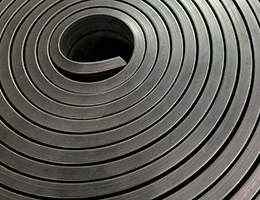
Rubber Industry
The use of coated calcium carbonate in producing rubber increases the resistance of the final product and diminishes its depreciation and corrosion.
The result is extended longevity of the product. In addition, this substance enhances the brightness and the quality of the surface of these products.
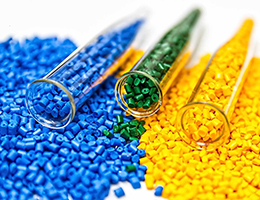
Polymer Industry
Since natural calcium carbonate is hydrophilic, therefore its application as a filler with polymers will lead to sintering (lump formation) which will result a compromised diffusivity and lower quality of final product. The solution is coating the surface of calcium carbonate with stearic acid.
Coated calcium carbonate leads to an increased resistance in the casing (lining) of polymer pipes and products. Enhanced surface quality of products and pipes’ casing (lining) and a lower possibility of fractures in the final product are other advantages of coating.

Other Applications
Using coated calcium carbonate leads to manufacturing brighter colors. It also enhances the diffusivity of pigments and the quality of the paint, therefore it makes difference to use coated calcium carbonate instead of uncoated calcium carbonates in other different applications like decorative and high-quality paints, resistant plastic equipment (including automobile parts, toys), etc.

Construction
One of the biggest users of Iron Oxide Pigments is building materials industry. Uses include coloring the concrete products and mortar because of their acceptable dispensability and good strength.
Our iron oxides are suitable for coloring cement, concrete and concrete products, roofing tile asphalt and send lime bricks and offers considerable cost saving up to 50% in comparison with other synthetic products.
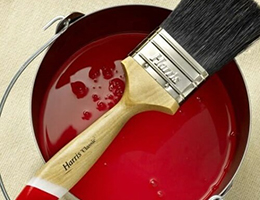
Paint and Coating
Paints industry can be considered as another biggest user of Iron Oxide Pigments. Most of the paint applications require applying micronized and good grades of pigments to acquire the best coloring effects.
Efficient test on paints, marine coating in which our iron oxides are used, shows a perfect performance than other similar products. Iron oxide is also ideal to be used in varnishes and stains.
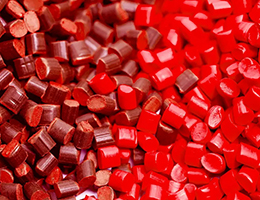
Plastic Masterbatches
Iron Oxide can be used in production of color master batches for the plastic industry since it’s considered as a heat stable material. Masterbatch is a concentrated mixture of pigments additives encapsulated during a heat processing to a carrier resin which is thereafter cooled and cut into granular shapes.
Masterbatch provides the processor to color raw polymer economically during the plastics manufacturing process.

Architectural Products
Various shades of Iron Oxides are added to mortars, concrete blocks, surface areas and other building components to make the best of building exteriors and provide endless possibilities for designers and architectures.
Such colored finishes are also applied to restore heritage building by matching colors of the blocks and plasters with that of the existing structures.
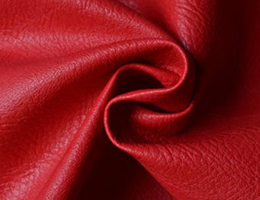
Leather Colorants
Iron Oxides are widely used in preparation of leather colorants. Our iron oxide is free from heavy metals and hence preferred by the industry.
During the past years, iron oxide has been used for manufacturing of leather products it provides constant colorant on leather without having a negative effect on lifetime of leather like some other similar products.

Other
Iron oxides match other applications such as:
|
|
|
|
|
|
|
|
|
|
|
|
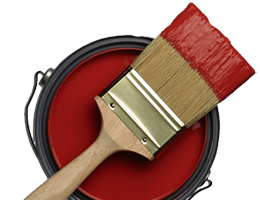
Paint and Coating
Paints industry can be considered as another biggest user of Iron Oxide Pigments. Most of the paint applications require applying micronized and good grades of pigments to acquire the best coloring effects.
Efficient test on paints, marine coating in which our iron oxides are used, shows a perfect performance than other similar products. Iron oxide is also ideal to be used in varnishes and stains.

Construction
One of the biggest users of Iron Oxide Pigments is building materials industry. Uses include coloring the concrete products and mortar because of their acceptable dispensability and good strength.
Our iron oxides are suitable for coloring cement, concrete and concrete products, roofing tile asphalt and send lime bricks and offers considerable cost saving up to 50% in comparison with other synthetic products.
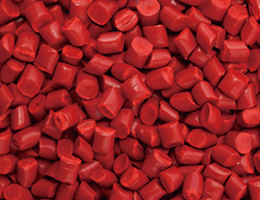
Plastic Masterbatches
Iron Oxide can be used in production of color master batches for the plastic industry since it’s considered as a heat stable material. Masterbatch is a concentrated mixture of pigments additives encapsulated during a heat processing to a carrier resin which is thereafter cooled and cut into granular shapes.
Masterbatch provides the processor to color raw polymer economically during the plastics manufacturing process.

Architectural Products
Various shades of Iron Oxides are added to mortars, concrete blocks, surface areas and other building components to make the best of building exteriors and provide endless possibilities for designers and architectures.
Such colored finishes are also applied to restore heritage building by matching colors of the blocks and plasters with that of the existing structures.
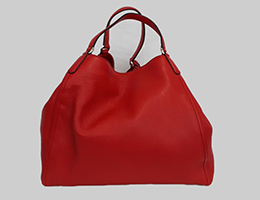
Leather Colorants
Iron Oxides are widely used in preparation of leather colorants. Our iron oxide is free from heavy metals and hence preferred by the industry.
During the past years, iron oxide has been used for manufacturing of leather products it provides constant colorant on leather without having a negative effect on lifetime of leather like some other similar products.
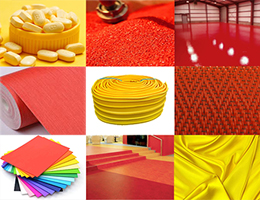
Other
Iron oxides match other applications such as:
|
|
|
|
|
|
|
|
|
|
|
|
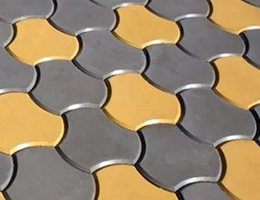
Construction
One of the biggest users of Iron Oxide Pigments is building materials industry. Uses include coloring the concrete products and mortar because of their acceptable dispensability and good strength.
Our iron oxides are suitable for coloring cement, concrete and concrete products, roofing tile asphalt and send lime bricks and offers considerable cost saving up to 50% in comparison with other synthetic products.
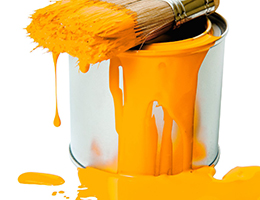
Paint and Coating
Paints industry can be considered as another biggest user of Iron Oxide Pigments. Most of the paint applications require applying micronized and good grades of pigments to acquire the best coloring effects.
Efficient test on paints, marine coating in which our iron oxides are used, shows a perfect performance than other similar products. Iron oxide is also ideal to be used in varnishes and stains.

Leather Colorants
Iron Oxides are widely used in preparation of leather colorants. Our iron oxide is free from heavy metals and hence preferred by the industry.
During the past years, iron oxide has been used for manufacturing of leather products it provides constant colorant on leather without having a negative effect on lifetime of leather like some other similar products.

Architectural Products
Various shades of Iron Oxides are added to mortars, concrete blocks, surface areas and other building components to make the best of building exteriors and provide endless possibilities for designers and architectures.
Such colored finishes are also applied to restore heritage building by matching colors of the blocks and plasters with that of the existing structures.

Masterbatch
Iron Oxide can be used in production of color master batches for the plastic industry since it’s considered as a heat stable material. Masterbatch is a concentrated mixture of pigments additives encapsulated during a heat processing to a carrier resin which is thereafter cooled and cut into granular shapes.
Masterbatch provides the processor to color raw polymer economically during the plastics manufacturing process.
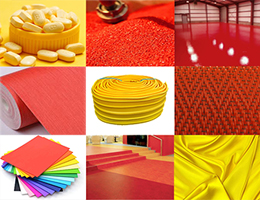
Other Industries
Iron oxides match other applications such as:
|
|
|
|
|
|
|
|
|
|
|
|

Rubber Industry
Rubber industry is normally using Talc due to its mechanical and physical properties.
Talc is used as a lubricant because of its smooth surface. When it’s used between two layers in rubber production, it avoids stickiness and friction.
Talc powder makes a very good reinforcing performance in rubber and it increase the tensile and tear strength as well as dimensional stability of final product as a result. Moreover, due to its excellent adsorption and affinity, it’s able to improve the fluidity in processing.
Due to its excellent thermal stability, high reinforcement, convenient addition, small amount of addition, high thermal decomposition resistance, good dispersion and anti-ultraviolet characteristics, it has variety of applications in rubber products such as cables, tires, hoses and gloves, rubber threads, etc.

Paint Industry
Talc is hydrophobic and opaque is nature, so that will help to improve the water repulsion and water resistant of paints and coatings.
Talc can also increase the viscosity of the paint. Consequently, it will facilitate the convenient and easy dispersion of paint.
When it comes to automobile or industrial powder coatings and paints where there are very fine and micronized particles, fine and readily micronized Talc can fill up even the smallest spaces when metallic surfaces are covered by powder coatings and paints.
Due to its lamellar (platy and layered) structure, it reinforces paint films by improving adhesion. As a result, it prevents cracking and peeling of the paint from the walls.
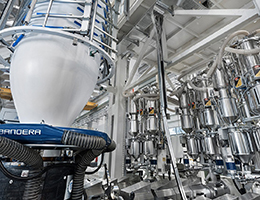
Plastics & Polymers
Talc enjoys a better thermal conductivity when it compares to polymer and that means a quicker transmission through the mixtures is achieved when Talc is used. As a result, plastic compounds are processed and cooled faster due to presence of Talc.
Filled polymers with fine and lamellar Talk powder, are able to withstand more strain without deformation in comparison with unfilled polymers. Moreover, Talc powder gives a much higher creep resistance when it compared to other mineral fillers.
Talc is basically a soft mineral and simply micronized to fine particle sizes. That makes Talc a very good option to fill up the very small spaces within polymer compounds which increases the impact strength as well as stiffness of plastics and polymers.
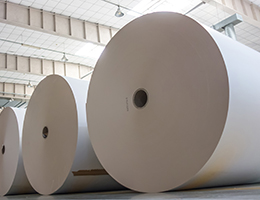
Paper & Pulp
Being soft and chemically inert, powdered Talc lowers the abrasion to paper machine fabrics and mechanical parts during the production process. Talc is also having a lamellar (platy and layered) structure and it can spread across the surface and make lower spots, minimize defects and holes in final output of paper.
Talc is organophilic and hydrophobic in nature. Thus, when it’s used in pulp processing, it will reduce the tackiness arising from stickies like plant resins and provide pitch control by preventing agglomeration on machineries of production line as a result.
It also improves the important characteristics such as ink gloss, scuff resistance and optimum ink transfer which will consequently increase the printability of finished paper. Whiteness of Talc will also improve the whiteness of final paper output.
Micronized Talc provides with a smoother finish which increase the quality of printing and the high opacity of Talc improve the opacity of the finished paper.
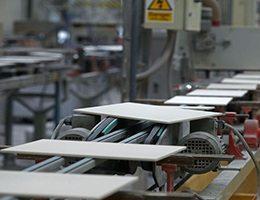
Ceramic Industry
Talc powder is also used in ceramic industry due to its physical and chemical properties. As it’s having a high thermal resistance, it will improve the resistance against the thermal shocks of ceramics and reduces the fractures as a result.
Talc powder improves the resistance of ceramic against the acids since it’s a chemically inert material and has considerably low reactivity with acids.Due to low iron content as well as high magnesium content of Talc powder, it improves the whiteness when it’s used in ceramic production process.
Pure Talc helps to prevent the water leakage in sanitaryware since it’s hydrophobic in nature. Moreover, customization of Talc based on customers’ needs and requirements is basically achievable since the grinding process of Talc is controllable.

Other Industries
Talc powder is also used in many other industries like food processing, cosmetics, drugs and pharmaceutical, etc.
In food processing, due to its lamellar structure, it provides a shiny polish when applied on outer surface of pulses. Moreover, it avoids stickiness between the pulses.
In cosmetics, Talc is the basic ingredient of almost all cosmetics in powdered form because of its oil absorption characteristic. It has also a good oil absorption capability which is required in some cosmetics.
In pharmaceutical, it provides required lubrication when applied on outer surface of capsules and tablets and facilitate the swallowing process. It has also many positive advantages which is in line with requirements of pharmaceutical products.

Drilling Industry
A huge quantity of mined barite is normally used in petroleum industry as a part of weighting material in formulation of drilling mud.
Hydrostatic pressure of the drilling mud is increased by Barite allowing it to compensate for high-pressure zones experienced while drilling.
The softness of the mineral also prevents it from making damage to drilling tools during drilling and let it play the role of a lubricant. The American Petroleum Institute (API) has set up the specifications for the application of barite in drilling mud.

Paint Industry
Barite is considered as an interesting replacement to expensive materials used in dope and painting. It is a very useful replacement to crypton, basofor, titanium dioxide, activity and monox which are used as fillers.
It is also very effective in controlling the viscosity of the paint. It improves the stability of the paint and giving more brightness to the paint. Due to its clean whiteness, it’s very effective as an extender for primers as well.
Barite also makes powerful chemical resistance to the walls and smoothness to the undercoats and promising beautiful and smooth walls as a result.
It’s a really unic material insulable in water, having high refractive index, high resistance to acids and alkalies and high bulk density which makes it more and more attractive to the paint industry.

Pharmaceutical
Barite is also commonly used in pharmaceutical industry worldwide. It is used as barium meal material for the intestines and stomach reflections.
Another important applicaition of barites in pharmaceutical industry includes the usage for filling of plaster and dope in order to extend the time limit of the plaster. It is also used in diagnostic medical tests.
Barites are also very effective in blocking x-rays and gamma-rays emission.
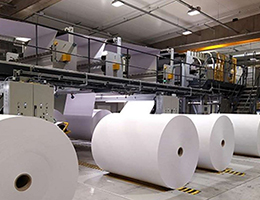
Paper Industry
Another application of Barite is papermaking industry.
Due to its clean whiteness, the high-refined barites powder is also very useful for filling white paperboards and coatig paper.
This increases the whiteness of the final product and also improve the percentage of coverage thereby giving it a clean white look.

Other Industries
In rubber industry,barites mineral of less than 500 mesh is commonly used for filling the rubber products that is very effective way to make them waterproof. At the same time, it improves the intensity of the product and makes it acid proof and alkali proof.
Barite is also very popular in the cosmetics industry due to its gentle and mild effect on the skin. It is also a wonderful replacement to titanium dioxide.
In plastic industry, it improves the intensity, stiffness and abrasive strength to it thereby making it stronger in strength and beautiful in shape.
Barite (specially in high-purity form) is videly used in medical field as well. It’s normally used in the gastrointestinal tract where its density prevents x-ray penetration, and thus is visible on an x-ray.
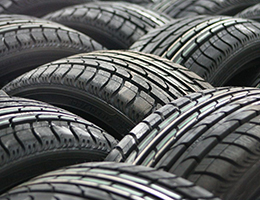
Rubber Industry
The most popular application of carbon black is in rubber production with two main categories specifically tires and mechanical rubbers such as hoses at automotive belts.
Performance and lifespan of the rubber material is improved by reinforcing properties of carbon black. Its application in rubber is basically divided into and N100 to N900 series blacks where N represents the nitrogen surface area.
Carbon black properties impacts on rubber on the performance of rubber by its higher the tensile strength, smaller particle size and reduced rebound and dispersibility as well as abrasion resistance.
As the porosity picks up, the tear strength and conductivity increase with the consecutive decrease in rebound. As the surface activity increases the abrasion resistance increases along with an increase in the rebound and modulus.
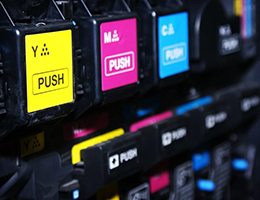
Ink and Paint
Carbon black is having a much higher tinting strength in comparison with iron black or organic pigments, and is widely used for newspaper inks, printing inks, India inks, and paints.
Carbon black is also used as black pigment for inkjet ink or toners.
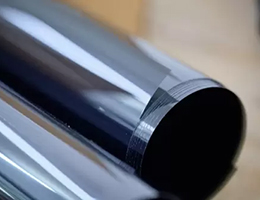
Resin and Film
Due to its high tinting strength carbon black is thermally stable and suitable for coloring resins and films that are heat-formed.
Carbon black is also excellent for absorbing ultraviolet light, providing both a superb resistance against ultraviolet rays and a coloring effect when just a small amount is mixed with resins.
Carbon black is widely used for general coloring for resins and films. Resins with carbon black are used in wire coverings, automobile bumpers and steel pipe linings which require weather resistance in particular.

Conductive Agent
Due to graphite-type crystalline structure of carbon black particles, it provides an excellent electric conductivity. Therefore, carbon black is widely used as elastomer, conductive filler, being mixed in plastics, adhesives, paints, films and pastes.
Fuel caps and fuel-introducing pipes of automobiles, for example, are required of electric conductivity for preventing static. Therefore, carbon black is used as an excellent antistatic agent.

Other Applications
Carbon black also provides stable resistance, and therefore is used as electronic equipment related material in various magnetic recording materials, display components and OA rolls.
Furthermore, Mitsubishi Chemicals has been developing carbon black with various combined functions for special applications.
Other applications of carbon black are refractories, fibers, electronics, metallurgy, batteries, cosmetics, etc.

